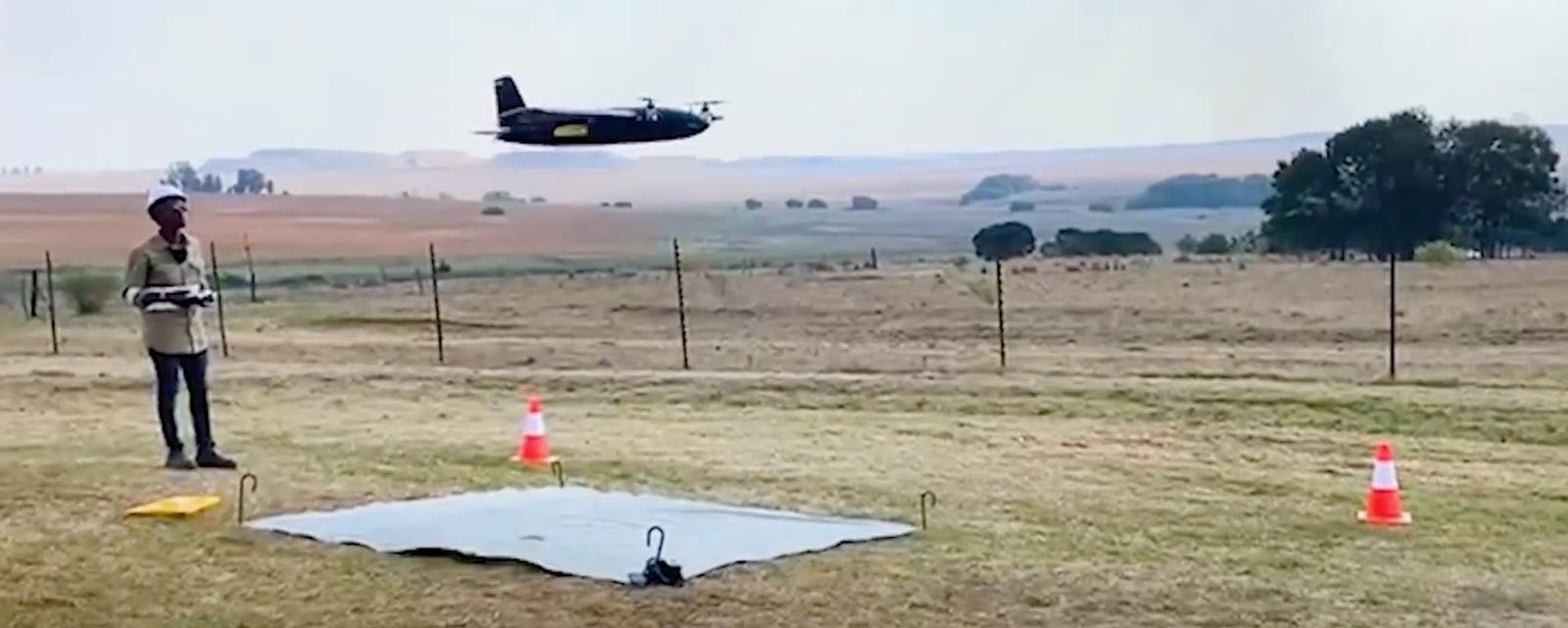Physical Address
304 North Cardinal St.
Dorchester Center, MA 02124
Physical Address
304 North Cardinal St.
Dorchester Center, MA 02124

South Africa Flying Labs gets ready to fly a drone over a flooded area.
More than one million people live in South Africa’s Alexandra township, a 20-block enclave built to house only 750,000. Overcrowding has pushed many into informal dwellings on the banks of the Jukskei River—an area subjected to frequent and deadly flooding.
But now, local pilots are surveying the area with drones to capture the cycles of devastation, a step toward planning more resilient reconstruction. The images are analyzed to predict flood patterns so the town can rebuild in ways that may prevent future tragedies.
It’s part of a movement across the Global South—using drone imagery and maps for urban planning and emergency response.
Aerial images captured by drones are loaded onto maps made with geographic information system (GIS) technology. These smart maps, rich with imagery and other data—like roads, buildings, and land features—become collaboration tools for local governments, farmers, developers, and first responders.
In Kenya, drones detect early signs of crop stress across thousands of hectares of fields. Analysts cull high-resolution images to identify areas that are struggling. Maps show where to adjust irrigation and fertilization prescriptions.
In Nepal, where many regions are inaccessible by roads, tuberculosis runs rampant. When community health workers encounter a suspected case, they call in drones to carry patient samples to a central hospital for testing. It takes two or three days to traverse the Himalayas on foot, but with drone data synced to maps and dashboards, public health officials are alerted to outbreaks in a matter of minutes.
Drone data capture leads to more sophisticated maps, such as this 3D map that conveys the risks of … [+]
In Tanzania, anti-malaria drones treat mosquito breeding sites from above. The precision spraying begins by mapping water catchment areas. Pilots use satellite navigation to guide drones to the target—faster and safer than entering the puddled paddies on foot.
It’s happening across the region. Pilots fly year-round, capturing thousands of images. These images can pinpoint the locations of people stranded after a disaster or assess damages in hard-to-reach areas like rooftops, steep slopes, and hazard zones. Analysts study drone images for burn scars and floodwater depths to find clues about how future fires or floods will impact their communities.
Loaded onto GIS maps, all this data becomes even more valuable. On a map:
Cultivating partnerships on the ground
While this work with imagery and maps looks impressive, getting drones off the ground isn’t easy. Tech organizations often start by building trust with local governments and communities.
One group called The Flying Labs Network that operates drone programs in more than 40 countries, developed an innovative approach. Each lab functions as an independent licensee, run by a local for-profit, nonprofit, or academic organization.
Teams across the network use GIS to share data, 3D models, and maps from one lab to the next. They draft technical use case reports that answer questions for people across the network, like: How was the data collected and processed? What were the outcomes? What were the challenges and failures?
A typical lab serves as an incubator and training center, teaching drone piloting and geospatial analysis to people in the community. This is how WeRobotics—the US/Swiss-based nonprofit behind the Flying Labs Network—cultivates a global web of local technology experts.
In a recent article, Sonja Betschart, a cofounder of WeRobotics, discussed the benefits. When there’s an emergency, Betschart said, local Flying Labs chapters can “deploy quickly—they’re already part of the community, and they know how to secure flight permissions in the countries already or can get them swiftly because they already work with the civil aviation authorities.”
The operational model is part of a push in development circles for localization, shifting not only technology to local organizations but also ownership of knowledge and responsibility.
“The international aid and development sector is slowly changing when it comes to the mindset of working with local organizations and seeing them as being as efficient as—if not more efficient than—international experts,” Betschart said.
A growing number of organizations—including the World Health Organization, the Gates Foundation, and the Centers for Disease Control—are tapping into the Flying Labs Network for drone projects instead of relying on international experts or in-house tech talent.
“This keeps on being one of our key focus areas,” Betschart said. “Not just doing the work by itself but also changing mindsets while doing it.”
Learn more about how GIS helps deliver humanitarian assistance to communities around the world.